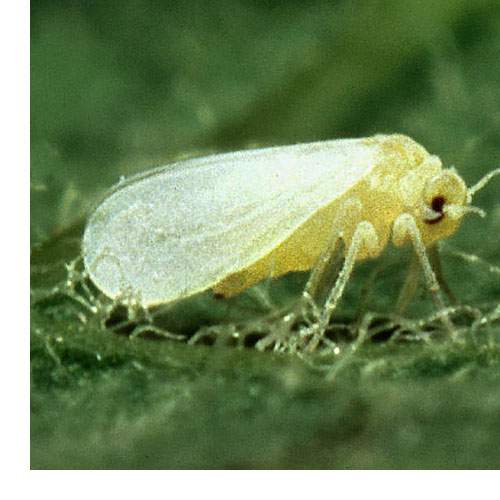Whitefly genome sequence
 Whitefly Bemisia tabaci is one of the 100 worst invasive alien species in the world (http://www.issg.org).
It can infest more than 1,000 plant species including major crops such as tomato, cassava, cotton, and
sweetpotato, and transmit over 300 plant pathogenic viruses including Tomato yellow leaf curl virus, Cassava mosaic virus
and Cassava brown streak virus, causing substantial crop losses and posing a serious threat to global food security. Genomic
resources would provide valuable information to facilitate the development of improved strategies for efficient whitefly management.
Whitefly Bemisia tabaci is one of the 100 worst invasive alien species in the world (http://www.issg.org).
It can infest more than 1,000 plant species including major crops such as tomato, cassava, cotton, and
sweetpotato, and transmit over 300 plant pathogenic viruses including Tomato yellow leaf curl virus, Cassava mosaic virus
and Cassava brown streak virus, causing substantial crop losses and posing a serious threat to global food security. Genomic
resources would provide valuable information to facilitate the development of improved strategies for efficient whitefly management.
We have assembled and annotated a draft genome sequence of B. tabaci biotype B (=MEAM1). Using an isogenic colony
of whitefly developed at USDA-ARS in Charleston, SC, over 6,000 haploid male individuals were collected and used for genomic
DNA extraction. Three paired-end libraries with insert sizes of 300 bp, 500 bp and 1 Kb, and three mate-pair libraries with
insert sizes of 3-5 Kb, 8-10 Kb and 15-20 Kb were then constructed and sequenced on an Illumina HiSeq 2500 system. A total
of 260 Gb (360X of the whitefly genome with an estimated size of 690 Mb) high-quality cleaned data were obtained. In addition, we
also generated ~13 Gb (~20X of the genome) PacBio long reads. De novo assembly of these reads resulted in a draft whitefly
genome of 615 Mb with an N50 length of 3.2 Mb. A total of 15,664 protein coding genes were predicted from the genome.
The genome data presented in this database are free to use. If you use the genome data, please cite the following publication:
Chen W, Hasegawa DK, Kaur N, Kliot A, Pinheiro PV, Luan J, Stensmyr MC, Zheng Y, Liu W, Sun H, Xu Y, Luo Y, Kruse A, Yang X, Kontsedalov S, Lebedev
G, Fisher TW, Nelson DR, Hunter WB, Brown JK, Jander G, Cilia M, Douglas AE, Ghanim M, Simmons AM, Wintermantel WM, Ling K-S, Fei Z (2016) The draft genome of whitefly Bemisia tabaci MEAM1, a global crop pest, provides
novel insights into virus transmission, host adaptation, and insecticide resistance. BMC Biology 14:110
|
